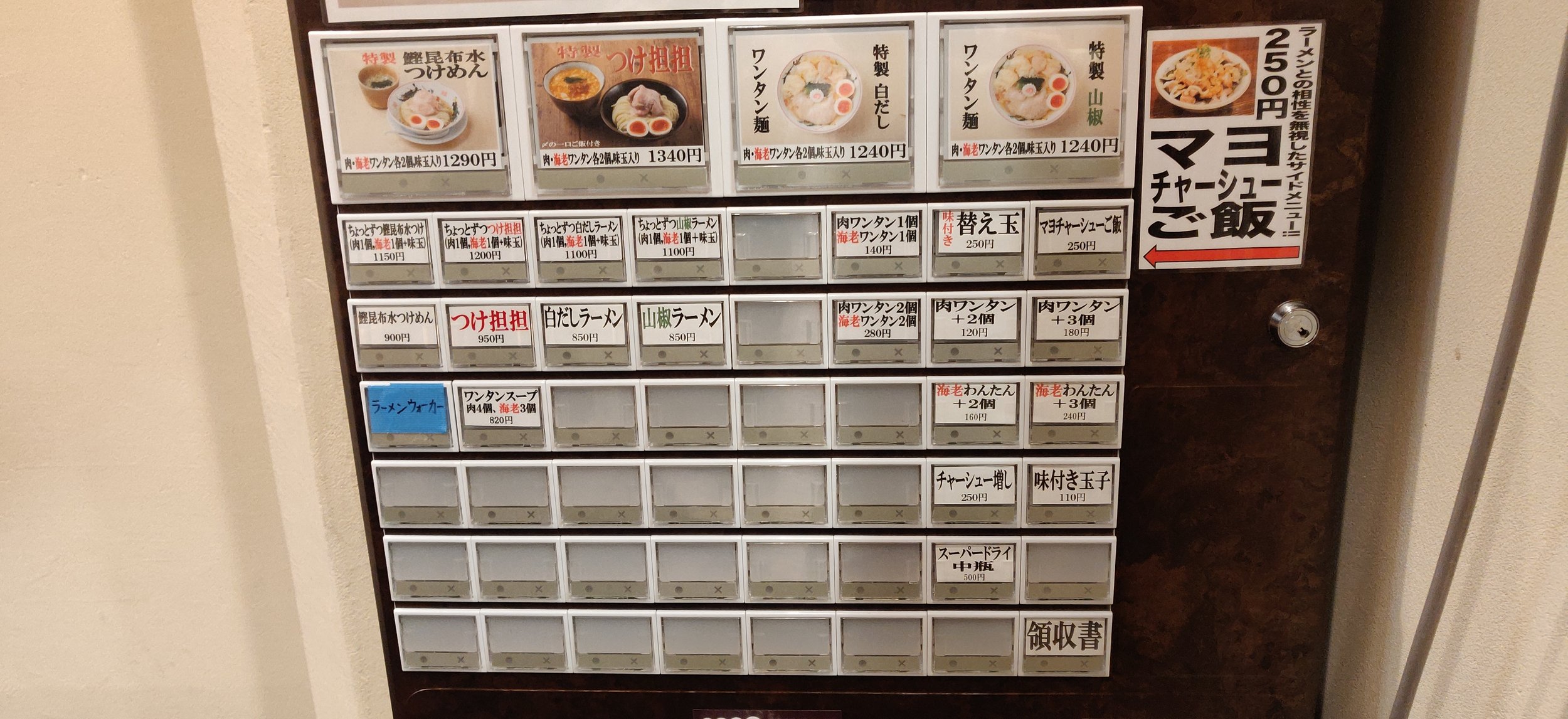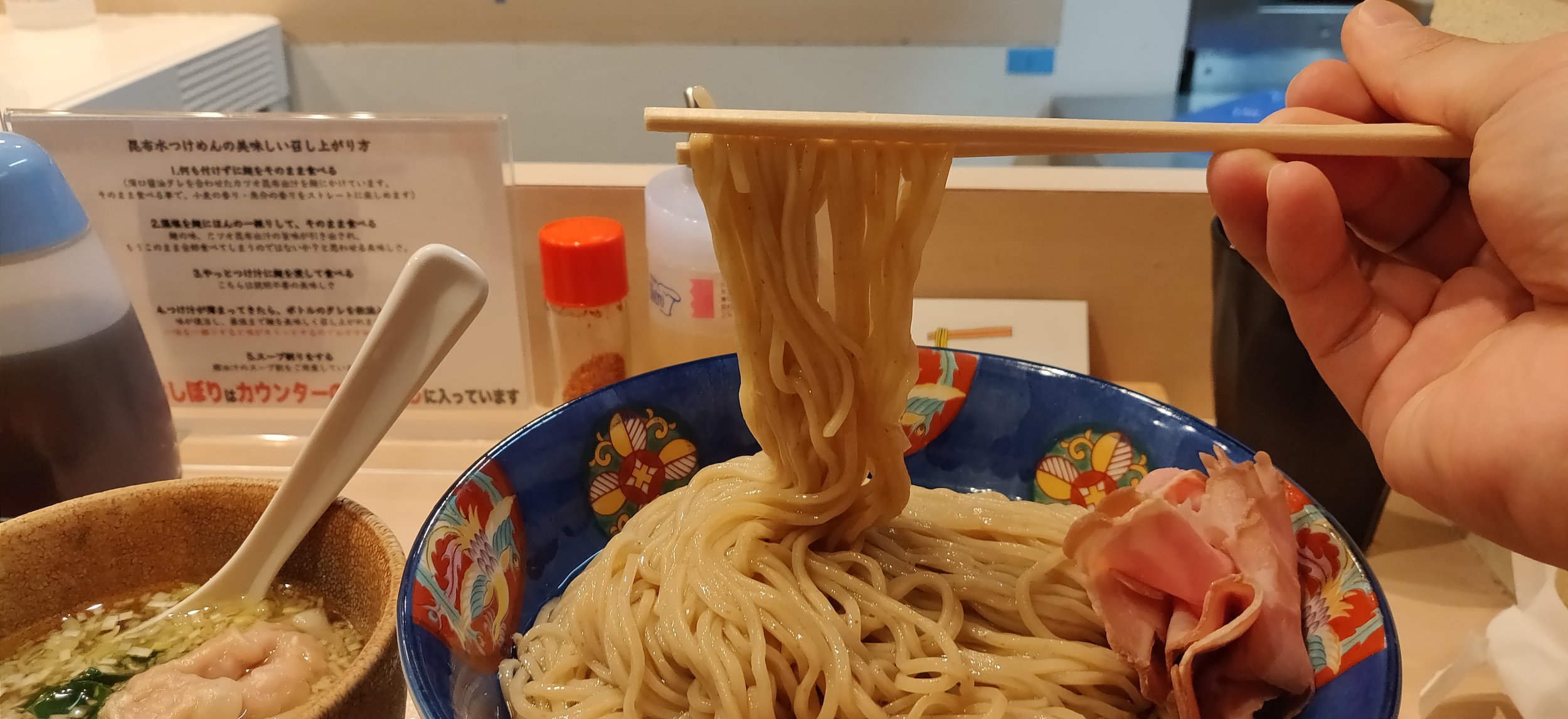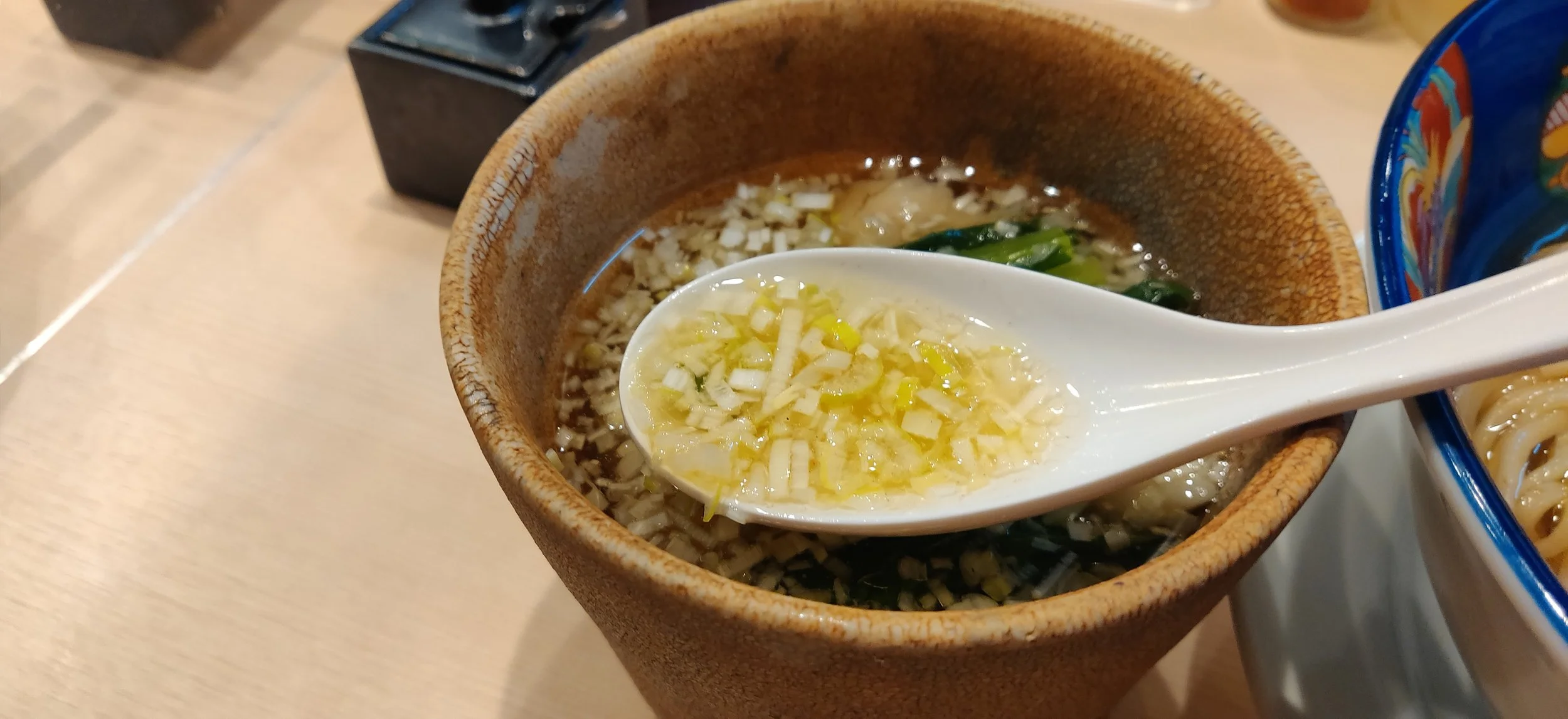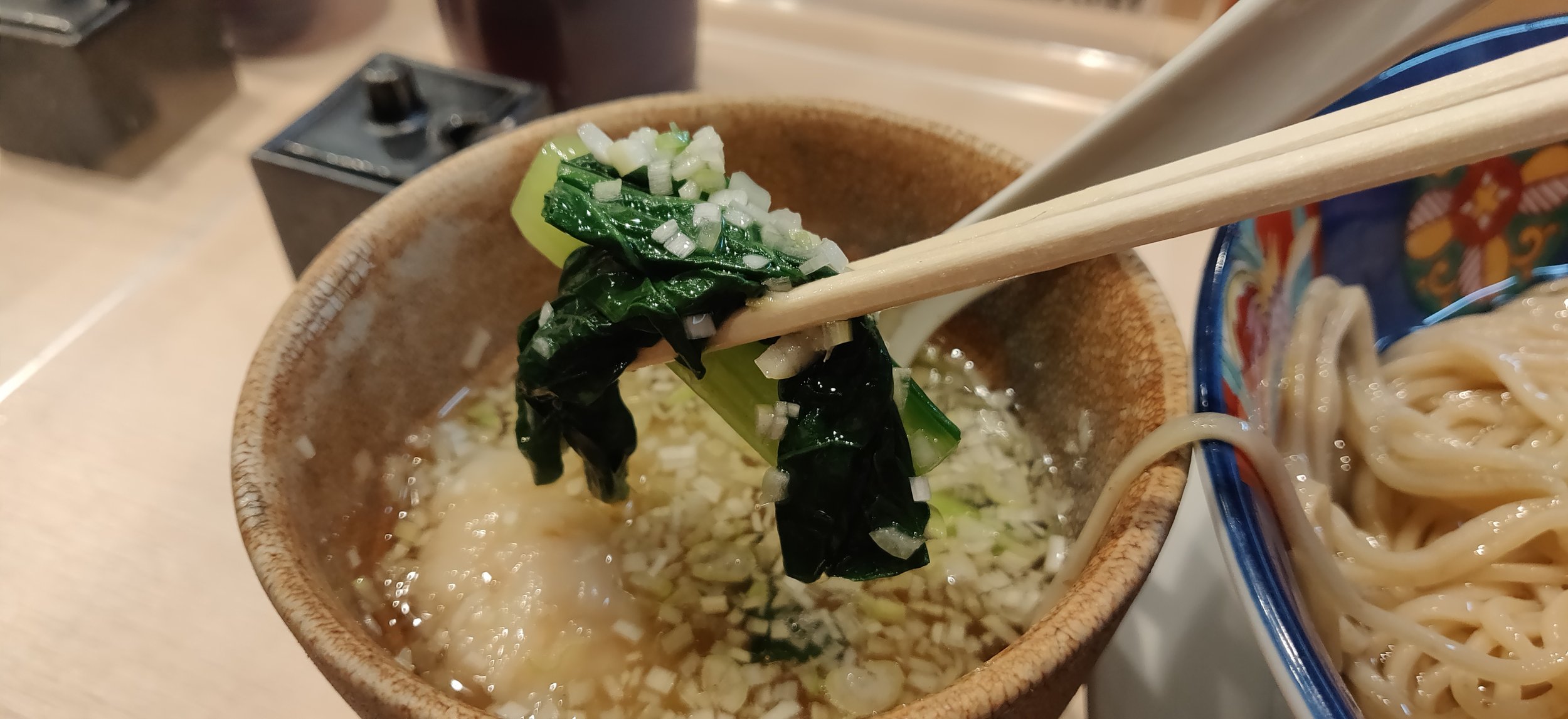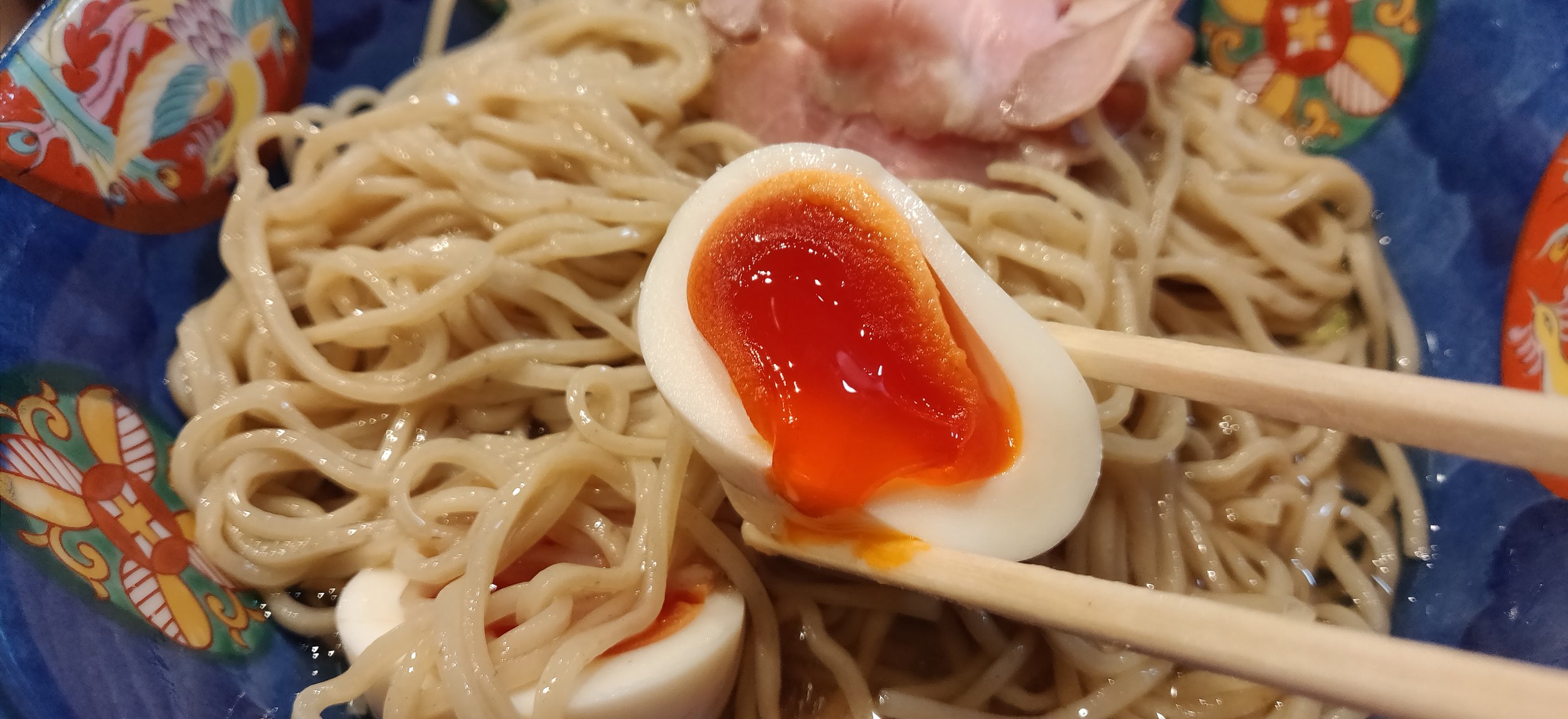Tsukemen Kinryu (つけめん金龍): Koike’s Next Tsukemen Venture; Awajicho, Tokyo
Back in the 1980s, one of the biggest goals for successful ramen masters was to franchise and expand as quickly as possible. Didn’t matter the cost, Japan’s economy was booming and every ramen shop you could think of was swimming in profits. Of course this was during the peak bubble era of Japan and once it burst in the 90s, many of these shops faced an unfortunate fate. For every Ichiran, Ippudo, and Tenka Ippin lays the the corpse of a former Nanden Kanden which sat atop the proverbial throne of Tonkotsu Ramen in Tokyo . At their high point, the president and founder of the franchise sat as an investor to “Tiger’s Den”, the Japanese predecessor to the popular TV show, “Shark Tank”. Once the economy took a turn for the worst, Nanden Kanden hit rock bottom from their over ambitious expansion and failed investments.
Fast forward to the 2010s and 2020s, the more voracious ramen eaters may have caught on to the vastly different expansion approaches some of their favorite shops have been utilizing. Long gone are the days of copying and pasting their shops at every train station and in are the more innovative business models such as creating different brands with entirely new menus and operate them under their corporate umbrella. One such shop to take this approach is Ramen Koike who have gone off to open Nishino, King Seimen, and President using this business model. Capitalizing on the success of their three ramen brands, they’re back and this time bringing their iteration of the trending Kombu-sui Tsukemen. In the short time since they opened, Tsukemen Kinryu have made a name for themselves as one of the premier Tsukemen options in Tokyo.
Probably the only constant throughout the different brands operated by this Koike group is their Mayo Chashu Rice bowl. If you’ve never had it, definitely grab it, but I would recommend trying it at a different location since the tsukemen here is a pretty hefty portion. I believe they have an English menu if you ask and they do have photos of their most popular items, but I’ll go ahead and translate the ticket machines here. Starting with the large buttons up top with the photos is the Tokusei options of the Kombu-sui Tsukemen, Tsuke Tantan, Shirodashi Wontonmen, and Sansho Wontonmen which all come with 2 each of the pork and shrimp wonton as well as their soft boiled egg. On the left side starting from the top left is the Chottozutsu options, which comes with one each of the wontons and a soft boiled egg, of the above ramen styles. Below those 4 are the regular options of the above ramen styles and the 4th row is a gentei, specialty menu option on the left and just wontons and soup which comes with 4 pork and 3 shrimp. On the far right side is the toppings and side dishes. Starting from the top left is one each of the wontons, Aedama extra noodles, and the aforementioned Mayo Chashu Rice bowl. Next row is the option for 2 wonton each of pork and shrimp, 2 pork wontons, and 3 pork wontons. Next row down is for 2 and 3 shrimp wontons followed by extra chashu and egg in the row below that. Lone button below is for Asahi Super Dry beer and a button for receipt at the very bottom. Order for the day is the Tokusei Kombusui Tsukemen.
So the style here is one that has been trending for the past couple years and it utilizes a technique started by Shimazaki-san of the famous Rocknbilly S1 down in Kansai. Typically the noodles for tsukemen come on the side after a quick wash of the starch, but with Kombusui, the noodles are actually served soaked in a viscous bath made of steeped dried kelp. When the kelp sits in water, it releases a slime which is a bit off putting to some, but is packed full of umami and makes for a great way to inject some in to the typically bare noodles. Noodles made at their branch store King Seimen sit in this kombu bath and is topped with a couple slices of their rosy pink pork chashu and ajitama soft boiled egg. On the side is their dipping soup which uses a dried fish based stock and white shoyu for the seasoning tare. The aroma oil is taken from a saba-bushi, or dried mackerel, which amps up the umami sensations.
Starting with the noodles, I would say the Koike group is one of the best in the business. If I’m not mistaken, each store has a specially made recipe which is than produced at the King Seimen location. Strands here at Kinryu are dense and chewy with a ton of wheat flour aroma bursting with each bite. Since the soup is dried fish based, it really pairs well with these noodles which are delicious when dipped, but can also stand alone as is in the Kombu bath. The firm, snappiness as well as the generous portion makes for a pretty filling meal so I would definitely recommend coming with an empty stomach. You can also choose the portion size for the noodles with the Tsukemen free of charge so get the large if you’re feeling hungry and want to save some cash.
As for the soup, the base uses both niboshi dried sardines and different bushi varieties so you get a pretty impactful soup despite it looking quite light in stature. I know most people coming from the West imagine a richer, more thick soup for a tsukemen as the Tonkotsu Gyokai, which is packed with pork bone collagen, is the norm out there, but Tokyo has been seeing a lot more of these thinner varieties which is closer to the OG tsukemen of Marucho and Higashi Ikebukuro Taishoken. I enjoy both, but it will come as a surprise if you’re expecting something creamy so take this as your warning. It doesn’t pack a super impactful punch like a Tonkotsu Gyokai, but it is still brimming with fantastic flavors so if you want to try a light tsukemen, this is the shop to do it. The light simmer on the niboshi and bushi helps bring out the savoriness without the bitterness of dried fish and the white shoyu elevates those flavors without interfering with the elegant stock so it is as elegant as any tsukemen can be. I am a huge Koike fan boy, but I think this is a soup anyone can appreciate and love.
Of course, if you’re a Koike group regular, you know the wontons are gonna be phenomenal and I would rank them up there with Tantantei kei lineage shops for best in Tokyo. Each dumpling is filled with delicious, plump fillings which always goes really well with their soups. My favorite is the shrimp which has a bite left in the shrimp paste making it burst with flavor when you sink your teeth in to them. As for the pork, a gentle ginger flavor is added which helps make it refreshing and tones it down as it pairs in this dried fish based soup. Along with the wontons is some blanched mustard green and minced negi which give the bowl an earthiness that I also quite enjoyed. With the noodles is the pork chashu and egg which are cooked to perfection and is really well thought out in plating as it keeps it from overcooking via the residual heat of the soup. The whole dish is really well balanced and I honestly can’t recommend it enough.
It honestly takes a lot for me to recommend shops to tourists because it always depends on where they are staying/venturing around in Tokyo and what their schedule looks like, but Kinryu is one I can wholeheartedly recommend as it is located in central Tokyo and never really draws huge lines. It also offers a style of ramen which hasn’t caught on yet in the Western countries so I think the uniqueness also lends to how recommendable the shop is. Whether you’re a ramen head or just a casual visitor to Japan, bookmark this shop on your google maps. Never hurts to have it tucked away and I guarantee you’ll leave satisfied!

